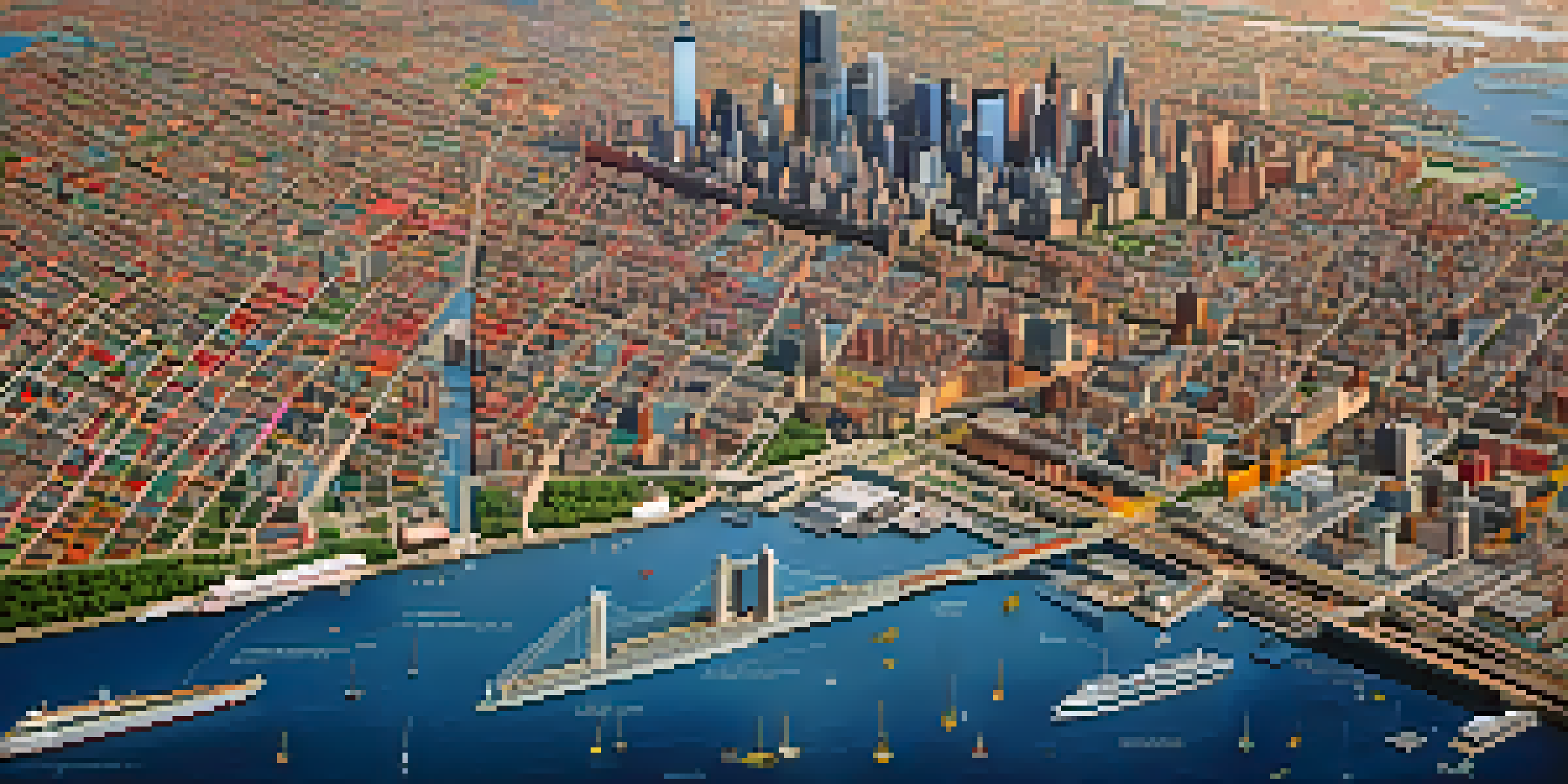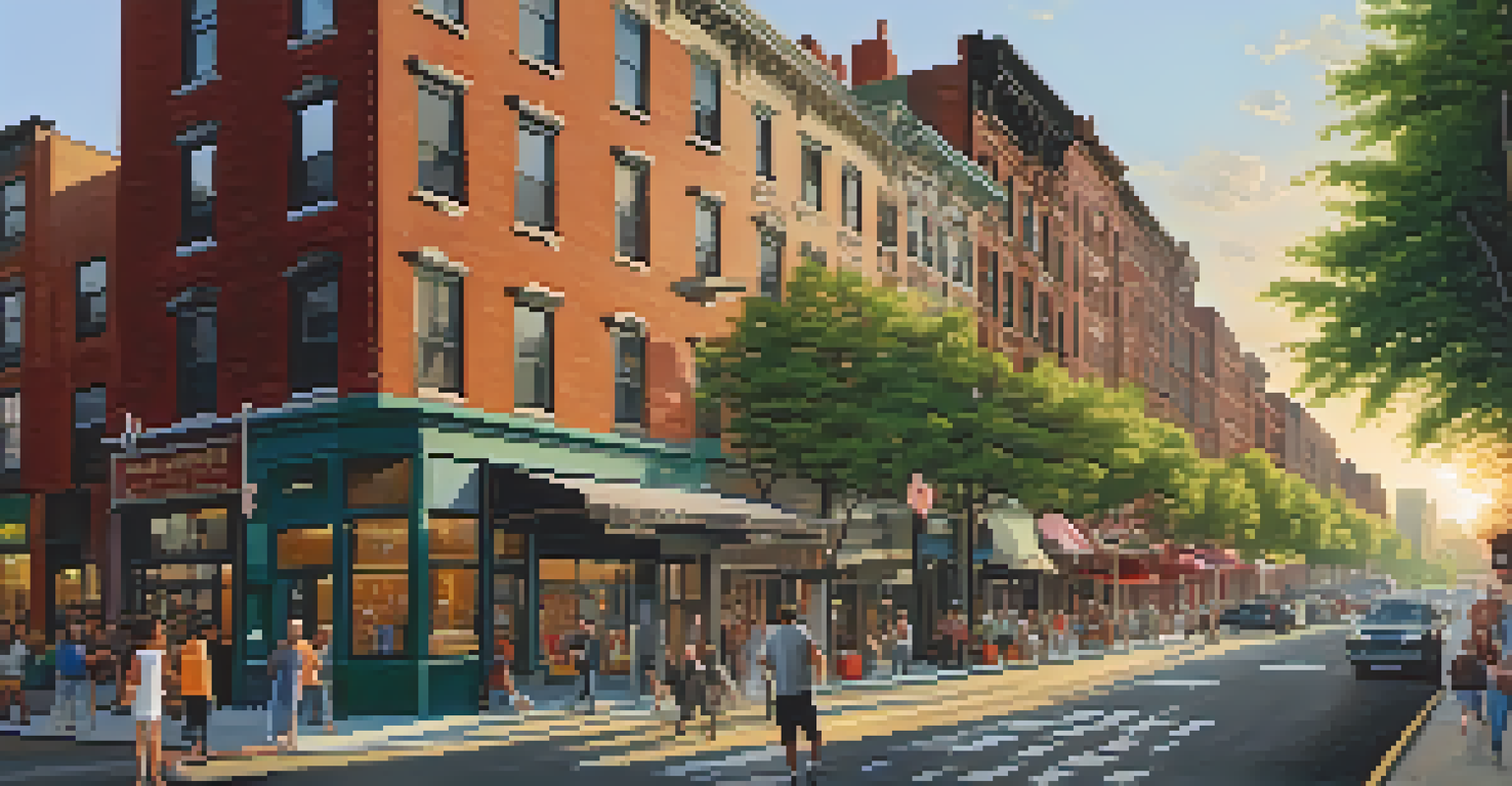Understanding Zoning Laws in NYC Real Estate Development

What Are Zoning Laws and Why Do They Matter?
Zoning laws are regulations that dictate how land can be used in a city. In New York City, these laws are crucial for maintaining the character of neighborhoods and ensuring that developments align with community goals. For example, they help determine whether an area can host residential buildings, commercial establishments, or industrial sites.
Zoning is not about building walls, but about creating a framework for community growth and sustainability.
Understanding zoning is essential for any developer or investor in NYC. These laws can significantly impact project feasibility, financing, and the overall success of a development. If a developer plans to build an apartment complex in an area zoned for manufacturing, they could face significant hurdles, including legal challenges and additional costs.
Moreover, zoning laws can influence property values. Areas with favorable zoning for residential or commercial use may experience higher demand, while those with restrictive zoning can see decreased interest. Therefore, knowing the zoning landscape is an invaluable tool for anyone looking to navigate NYC real estate.
The Different Types of Zoning Districts in NYC
New York City's zoning map is divided into various districts, each with specific rules. The primary categories include residential, commercial, and manufacturing zones, with subcategories that further refine their uses. For instance, R1-R10 districts are primarily for residential use, while C1-C8 districts cater to commercial activities.

Within these categories, there are also mixed-use zones that allow for a combination of residential and commercial developments. This flexibility can be appealing for developers looking to create vibrant communities that blend living and working spaces. An example is the Special Mixed Use Districts, which encourage a mix of uses to promote vitality in specific areas.
Zoning Laws Shape NYC Development
Zoning laws dictate land use in NYC, influencing everything from property values to the feasibility of development projects.
Understanding the nuances of these districts is vital for developers. Each district has unique regulations regarding building height, density, and permitted uses. This knowledge can help streamline the planning process and avoid potential pitfalls during development.
How Zoning Laws Impact Property Development
Zoning laws play a pivotal role in determining what can be built on a property. Developers must adhere to the zoning regulations, which outline factors such as building height, lot coverage, and required setbacks. For example, if a lot is zoned for low-rise buildings, a developer cannot construct a high-rise without seeking a variance.
Good zoning is not just about property lines; it's about the future of our communities.
Obtaining a variance can be a lengthy and complex process, often requiring public hearings and community input. This means developers must be prepared to navigate potential pushback from local residents and stakeholders who may have concerns about changes to their neighborhood. Engaging with the community early on can help mitigate opposition and foster a more collaborative environment.
In addition to variances, developers may also encounter special permits that allow for specific uses not typically permitted in a zoning district. These permits can provide opportunities for innovative projects, but they also come with additional scrutiny and regulatory hurdles.
The Role of the NYC Planning Commission
The NYC Planning Commission plays a crucial role in shaping zoning laws and policies. This body reviews zoning changes, special permits, and variances, ensuring that developments align with the city’s long-term vision. Their insights and decisions can significantly impact the direction of real estate development in the city.
When a developer seeks to change zoning or obtain a permit, the Planning Commission assesses the proposal's potential effects on the community. They consider factors such as environmental impact, traffic, and the overall character of the neighborhood. Their goal is to strike a balance between development and community well-being.
Understanding Zoning Districts is Key
Familiarity with NYC's diverse zoning districts is essential for developers to navigate regulations and avoid potential setbacks.
Additionally, the Planning Commission conducts studies and engages in planning initiatives that can influence zoning laws on a broader scale. Understanding their processes and priorities can provide developers with a competitive edge when planning new projects.
Navigating the Zoning Approval Process
Navigating the zoning approval process can feel like a labyrinth for developers. It typically begins with a proposal, followed by consultations with city officials and community boards. Proper communication and thorough documentation are essential to ensure that all requirements are met and to facilitate a smoother review process.
Developers often benefit from hiring experienced land use attorneys or consultants who understand the intricacies of NYC zoning regulations. These professionals can help prepare the necessary documentation, represent the developer at public hearings, and address community concerns effectively. Their expertise can be invaluable in avoiding common pitfalls.
Once the application is submitted, it goes through a series of reviews and public hearings. The timeline can vary significantly depending on the complexity of the project and the level of community interest. Being patient and proactive during this process is key to achieving a successful outcome.
Common Zoning Challenges in NYC Development
Developers often encounter a range of challenges when dealing with zoning laws in NYC. One common issue is the opposition from community members who may fear potential negative impacts on their neighborhood, such as increased traffic or changes to the local character. Building strong community relationships can help address these concerns upfront.
Another challenge is the complexity and sometimes ambiguity of zoning regulations. The laws can change frequently, and understanding how they apply to a specific project can be daunting. Developers must stay informed about any changes and be prepared to adjust their plans accordingly.
Community Engagement is Crucial
Developers must engage with local communities early in the zoning approval process to address concerns and foster collaboration.
Lastly, the financial implications of zoning can also be a challenge. Securing financing for a project often depends on the ability to demonstrate compliance with zoning laws. Developers may need to invest time and resources into navigating approvals before they can even break ground, which can strain budgets and timelines.
The Future of Zoning Laws in NYC
As NYC continues to evolve, so too do its zoning laws. Recent trends indicate a growing emphasis on sustainable development and affordable housing, prompting discussions about how zoning can facilitate these goals. There is a push for more flexible zoning regulations that can adapt to changing community needs.
Moreover, with the rise of remote work and changing lifestyles, zoning may need to accommodate mixed-use developments that blend residential, commercial, and recreational spaces. This shift could lead to more vibrant neighborhoods that enhance quality of life while supporting local economies.

Ultimately, the future of zoning laws in NYC will depend on ongoing dialogue between city officials, developers, and community members. Adaptability and collaboration will be key in creating a zoning framework that meets the needs of a diverse and dynamic city.